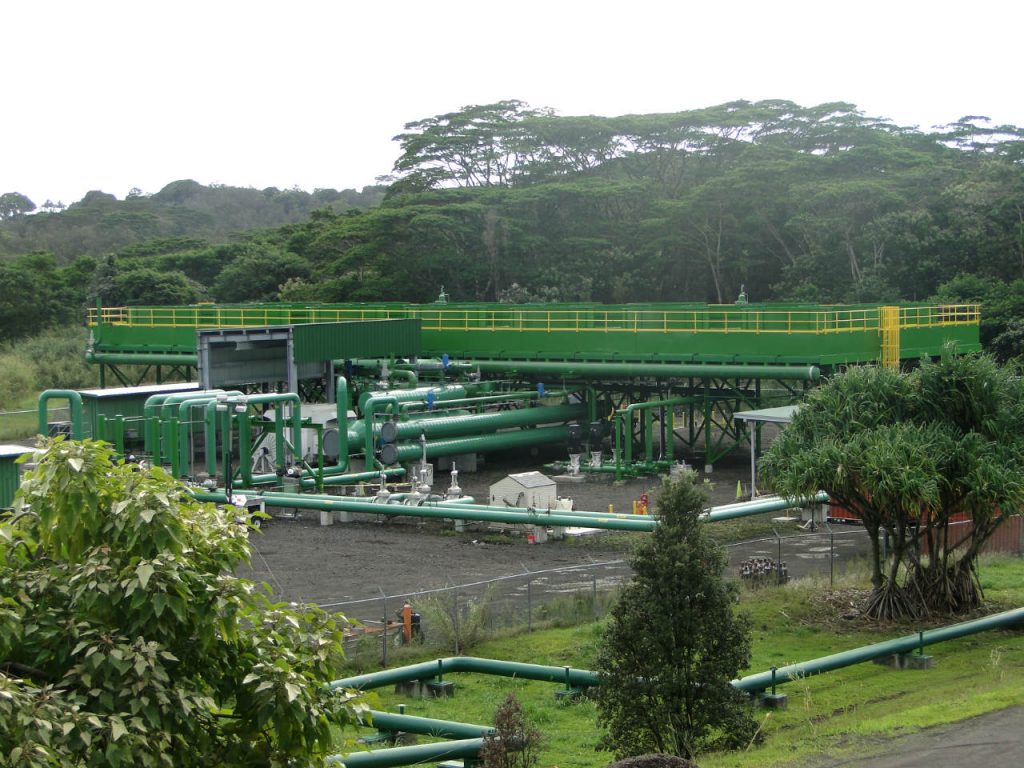Hawaiian Electric sees geothermal expansion as one key element in cutting carbon
One key element of Hawaiian Electric to cut carbon by 70% in the coming years is the expansion of geothermal energy use in the State of Hawaii.
Stressing the urgency of the global effort to slow climate change, Hawaiian Electric has set a goal to cut carbon emissions from power generation 70% by 2030, so the company in its Climate Change Action plan presented earlier this month. The plans include expanding the use of geothermal energy that is currently only used for power generation by one plant on the Big Island of Hawaii. The Puna Geothermal power plant by Ormat with an installed power generation capacity of 38 MW and additional 8 MW under approval process.
Cutting emissions from power generation by 70%, compared with 2005 levels, would provide a significant portion of the reduction the entire Hawaii economy needs to meet the U.S. target of cutting carbon emissions by at least 50% economy-wide by 2030. The reduction includes generation owned by Hawaiian Electric and independent power producers who sell electricity to the utility.
Hawaiian Electric has also committed to achieving net zero or net negative carbon emissions from power generation by 2045 or sooner, meaning that if there are any emissions, they will be captured or offset.
Hawaiian Electric’s forecast for the next nine years anticipates a steady pace of cost-effective renewable energy resources coming online to reduce the use of fossil fuels to generate electricity.
Key elements of the 2030 plan include:
- Shutting down the state’s last coal plant in 2022
- Adding nearly 50,000 rooftop solar systems to the 90,000 now online
- Retiring at least 6 fossil-fueled generating units and significantly reducing the use of others as new renewable resources come online
- Adding renewable energy projects capable of generating a total of at least 1 gigawatt, including shared solar (community-based renewable energy)
- Using more grid-scale and customer-owned energy storage
- Expanding geothermal resources
- Creating innovative programs that provide customers incentives for using clean, lower-cost energy at certain times of the day and using less fossil-fueled energy at night
By 2030, Hawaiian Electric’s renewable portfolio standard is expected to exceed 70%, with renewable resources available to provide close to 100% of the electricity generated on Hawaii Island and in Maui County.
After 2030, progress on elimination of carbon from power generation assumes continued use of proven resources, including wind, solar, geothermal, hydroelectric, biofuels and energy storage, along with the development of new technologies.
Those may include offshore wind, green hydrogen, wave energy and carbon-capture – all currently under development around the world – as well as other solutions that will emerge. A diverse portfolio of resources will also enhance resilience to climate-related events.
“The climate change summit is a call to action to join with our children and grandchildren to care for island earth for future generations,” said Shelee Kimura, senior vice president of customer service and public affairs who will become president and CEO of Hawaiian Electric on Jan. 1, 2022. “The progress we make this decade will determine the kind of future we’re making for our families. This is a bold goal for all of Hawaii, not just Hawaiian Electric, but the good news is we’ve already made a strong start and this commitment moves us further on the path to sustainability.”
Achieving a 70% reduction in carbon emissions is especially challenging in Hawaii, which has fewer generation options than utilities that use nuclear, natural gas and large-scale hydropower.
Hawaii also can’t import power from neighboring states. As Hawaiian Electric reduces its use of generators powered by imported fossil fuels, there’s still a need for generation resources available 24/7 to provide reliable, resilient energy.
“In Hawaii, we can and should be utilizing nature-based solutions to tackle climate change,” said Ulalia Woodside, executive director of The Nature Conservancy, Hawaii and Palmyra chapter. “It is absolutely right that Hawaiian Electric is looking at alternative energy sources. These efforts should be contemplated with strong and robust community input and consent, informed by the best science, and done in a way that preserves native habitats and species.”
The Honolulu-based Institute for Climate and Peace also supports the Hawaiian Electric carbon emission commitment and the expansion of renewable energy resources.
“The Institute for Climate and Peace strongly supports rigorous emissions reduction objectives in Hawaii and everywhere, particularly at this important global turning point of COP26,” said Zelda Keller, executive director of the Institute for Climate and Peace in Honolulu. “We applaud Hawaiian Electric for its commitment to significantly increasing renewable energy generation and energy storage capacity across the islands, and we hope that other institutions and companies will follow their lead. Extensive and reliable renewable energy networks in Hawaii will mitigate the harm done to our ecosystems by carbon-intensive energy production while also promoting sustainable, peaceful futures for all.”
Source: Hawaiian Electric


















